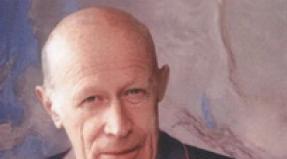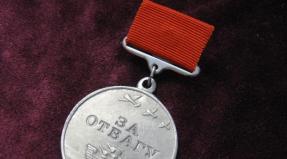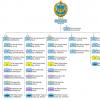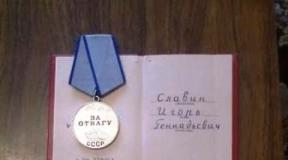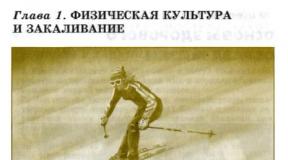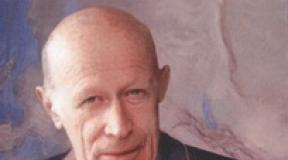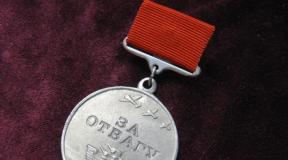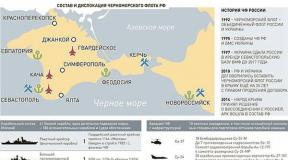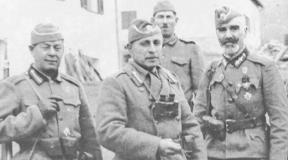Anywhere, anytime. Ministry of Internal Affairs of Russia. Internal Troops Giving Anywhere Anytime
On August 19, 1981, an order was signed to create the Special Purpose Group (GSN) of the USSR KGB “Vympel” - a top secret detachment for conducting operations outside the country during the “special period”. This year marks 33 years since the creation of the division
Many veterans of the Vympel GSN live in the Pavlino microdistrict of Zheleznodorozhny. Many of them are members of the city branch of the “Combat Brotherhood”. Every year on August 19, Vympel veterans and current employees of the unit get together to remember the past, remember those who are not around, and talk about the day. “Vympel” for each of us has become not only a school of life, but also life itself,” said Sergei Georgievich Yakovlev, a veteran of the Vympel GSN, chairman of the board of the Zheleznodorozhny city branch of the Military Brotherhood Military Organization. “No matter how many years have passed since the end of your service in the unit, the memories of these years are always with you, as if it all happened yesterday.”

The initiator of the creation of the Vympel GOS was the head of Directorate “S” (illegal intelligence) of the First Main Directorate of the KGB of the USSR, Major General Yuri Ivanovich Drozdov. He expressed the idea of creating a special personnel unit in the KGB of the USSR system, capable of carrying out tasks of any degree of complexity, at the end of December 1979 during a meeting with Yu.V. Andropov, who then headed the KGB of the USSR. A year was spent on all kinds of discussions, approvals, preparation of the necessary documentation, and when the issue of creating a group was finally resolved, Andropov summoned Drozdov and, handing him the documents, said: “Work, create! And so that they have no equal!”
They really had no equal. They could solve any problem - at any time and anywhere in the world. In 1981, in the Separate Training Center (STC), the location of which was one of the USSR KGB facilities located in Balashikha near Moscow, the training of top-class intelligence officers for special operations abroad began. The selection of personnel for the special forces was very strict. They said that it was much easier to get into the cosmonaut corps than into the educational center. Out of 1000 candidates for the GSN, 10-12 people were selected, paying special attention to their high erudition, ability to make independent decisions, excellent physical fitness, and the presence of certain psychological qualities that allow them to overcome the highest physical and mental stress.

Chairman of the Board of the Zheleznodorozhny City Branch of the “Combat Brotherhood” S.G. Yakovlev told how he ended up serving in the newly created special unit: “In 1981, I graduated from the Higher Military Counterintelligence Courses of the KGB of the USSR in Novosibirsk. Shortly before their graduation, graduates were asked to take a test - in a limited period of time they were required to answer a large number of questions of various types and express their opinions regarding the solution of certain problems. Then, an interview was held with the officers who successfully passed the test, as a result of which the commission selected several people to work in the special forces. We didn’t yet know which one exactly. After going on vacation, we arrived in Moscow, called the phone number given to us and found out the address where we should go. So for the first time we got to Balashikha, to the Separate Training Center of the KGB of the USSR, and soon began classes.”
At the initial stage of training, for various reasons, most of the candidates initially selected for the Vympel special forces were eliminated. As a result, Vympel retained fighters who were infinitely devoted to their work, capable of overcoming any difficulties and solving tasks that at first glance seemed impossible. “Any time, any place, any task” was their motto.

In order for the task set by the command to be solved in the best possible way within the time allotted for its implementation, special-purpose reconnaissance officers had to master a huge range of knowledge and skills that would allow them to cope with reconnaissance and combat missions of any degree of complexity with honor. Officers who passed strict selection for the unit were required to master numerous special subjects and successfully complete theoretical and practical training using a unique methodology developed specifically for GSN employees. The training process for Vympel employees did not stop for a minute and continued throughout the entire service, which was built according to a certain pattern: study, special mission, return to the unit, report on the trip, a short vacation and again study, study, study, after which On the next business trip, the knowledge, skills and abilities acquired during the training process were honorably applied in practice by the Vympelov students.
As a result of the competently built training system at the OTC, the Vympel special forces soldiers became capable of solving any problems; the officers of this unit did not know the word “impossible.” Possessing foreign languages, combat skills using any type of weapon, diverse knowledge and skills in the field of military affairs, intelligence and counterintelligence, physically developed, able to independently analyze the information received and, taking this into account, build tactics and strategy for subsequent actions, the Vympelovites were a unique thinking force .

The first serious test for Vympel officers was special missions to Afghanistan. In total, during the years of the war in Afghanistan, about eighty percent of the officers of the Vympel special forces took part in hostilities on the territory of this republic. Thanks to special forces intelligence officers, numerous large-scale operations and local actions were developed and carried out (including inciting clashes between gangster groups), and weapons delivery routes were blocked more than once.
In the late 80s - early 90s, Vympel officers, who were trained to carry out security actions outside the country, together with employees of other law enforcement agencies, had to participate in special operations to restore order in the territory of the union republics - Azerbaijan, Armenia, Georgia, Uzbekistan, Kyrgyzstan, where interethnic conflicts flared up at that time. Carrying out the orders of the command, the special forces soldiers, forced to operate on the territory of their state, invariably made sure that civilians were not harmed during operations.
After the collapse of the USSR, the special unit “Vympel” was reassigned several times to various departments in a short period of time and in 1994, having been transferred to the subordination of the Ministry of Internal Affairs, they were given a new name - “Vega”, and the Separate Training Center in 1992 was reoriented to solve problems different from previous ones (on the fight against drug trafficking and armed criminal groups, to protect strategically important facilities from terrorist attacks). In September 1995, when the Vega OSN was transferred to the Department for Combating Terrorism under the FSB of Russia, the unit was returned to its previous name - “Vympel”.

Today, the legal successor of the Vympel GSN of the KGB of the USSR is Directorate “B” of the Special Purpose Center (TSSN) of the FSB of Russia. The employees of Directorate “B” are well trained, each with their own specialization. Vympel soldiers of the new generation honorably fulfill the tasks assigned to them, participating in various special operations. Just like their older comrades, day after day they comprehend the science of winning, so that then, going on combat missions by order of the Motherland, apply the knowledge, skills and abilities acquired during the training process in practice, and, risking their own lives, save those who their help is needed.
Veterans of the Vympel GOS and current employees of the unit always try not to miss the opportunity to meet and communicate with each other. Special forces officers who completed their service in the special forces created four public organizations of veterans of the Vympel group, which act with a common goal, striving to ensure that not a single employee of the unit, not a single family of a deceased special forces soldier, is left out of care and attention. Veteran organizations regularly organize events in which Vympel members of different generations participate, provide assistance to the families of the deceased, employ employees of the unit who have completed their service in it, and publish books and photo albums dedicated to the Vympel group.

In the year of the 30th anniversary of the formation of the Vympel Special Purpose Group of the KGB of the USSR, which was celebrated in 2011, a museum of the legendary unit was created on the territory of the Separate Training Center in Balashikha near Moscow. And in school No. 3 of the Pavlino microdistrict of the city of Zheleznodorozhny, the Heritage Museum opened in November 2011, one of the exhibitions of which is dedicated to the Vympel GSN. Members of the Railway City Organization of the All-Russian Military Organization "Combat Brotherhood", which includes many veterans of the Vympel Special Purpose Group, actively participated in the creation of this exposition.

On the day of the grand opening of the museum, veterans and current employees of the unit gathered at school No. 3. Major General Valery Aleksandrovich Kruglov, who led Vympel in 1994-1996, also arrived to meet with the schoolchildren. Today, Vympelovites work closely with the Heritage Museum, meet with schoolchildren, talk about their service in the unit, and answer numerous questions from children.

And on August 19, 2014, according to a long-standing tradition, current employees of the unit and veterans, having passed through the “gateway near DorNII” immortalized in the song, will meet at the “old facility”, lay wreaths and flowers at the monument to the employees of the Vympel group, at the memorial plaques on the Memory Alley with the names of special forces soldiers immortalized on them who died while performing combat missions, they will visit the graves of the soldiers of Directorate “B” of the TsSN FSB of Russia buried at the Nikolo-Arkhangelsk cemetery.
And of course, on the day of the 33rd anniversary of the formation of the unit, pennant members of all generations will wish each other health, prosperity, joy and peaceful skies above their heads. Among all the good wishes, the most important thing will definitely be heard - that all the soldiers ensuring the safety of Russian citizens on the territory of the country and beyond its borders invariably return home alive...
Buddha, the brain and the neurophysiology of happiness. How to change your life for the better. Practical guide. Mingyur Yonge
ANYWHERE, ANYTIME
ANYWHERE, ANYTIME
Combine everything you encounter with meditation.
Jamgon Kongtrul Lodro Thaye. The Great Path of Awakening
With all this in mind, let's look at how you can practice in your daily life and even use what are usually considered distractions as a crutch to open up your mind. In ancient texts this is called "taking life as a path."
A simple walk down the street can be a great opportunity to develop mindfulness. How often do you notice that when you go to a place, such as a grocery store or a restaurant for lunch, you end up at your destination without even realizing how you got there. This is a classic example of letting the crazy monkey run wild, creating all sorts of distractions that not only prevent you from experiencing the fullness of the present moment, but also deprive you of the ability to focus and train your awareness. This opportunity comes when you consciously decide to pay attention to your surroundings. Look at the building you pass, at the other people on the sidewalk, at the traffic on the street, at the trees along your route. When you pay attention to what you see, the crazy monkey calms down. Your mind becomes less agitated and you begin to experience a sense of calm.
You can also pay attention to the bodily sensations of walking, such as the sensations of your legs moving, your feet touching the ground, the rhythm of your breathing, or your heartbeat.
This works even when you are in a hurry, and is essentially a good method of combating the anxiety that usually accompanies us when we are in a hurry. You can continue to walk as fast as you can only by paying attention either to your bodily sensations or to the people, places or things you pass by. Just allow yourself to Think like this: “Now I’m walking down the street... Now I see a building... But I see a man in a T-shirt and jeans... Now my left foot is touching the ground... Now my right foot is touching the ground.. ."
When you bring mindful attention to your actions, distractions and worries gradually disappear and your mind becomes increasingly calm and relaxed. And then, when you get to where you need to be, you feel much more comfortable and open to moving on to the next stage of your “journey.”
You can transfer the same attention to driving a car or everyday experiences at home or at work, simply by directing your attention to different objects in your field of vision or using sounds as a reference. Even simple tasks like cooking and eating provide opportunities for practice. For example, when cutting vegetables, you might pay attention to the shape or color of each piece you cut, or to the sound of soup or sauce simmering. As you eat, pay attention to the smells and tastes you smell. Or you can practice objectless meditation in any of these situations, allowing your mind to simply remain open while you engage in an activity without attachment or aversion.
You can meditate even while sleeping or dreaming. As you fall asleep, you can either relax your mind in objectless meditation or gently direct your attention to the feeling of sleepiness. In addition, you can help turn your dreams into meditative experiences if, as you fall asleep, you mentally repeat several times: “I will be lucid in my dreams, I will be lucid in my dreams, I will be lucid in my dreams...”
From the book About the Boy Who Could Fly, or the Path to Freedom author Klimenko Victor From the book The Jose Silva Method [Reprogram yourself for money] author Stern Valentin From the book by Dale Carnegie. How to become a master of communication with any person, in any situation. All secrets, tips, formulas by Narbut Alex From the book God Never Blinks. 50 lessons that will change your life by Brett Regina From the book Style Guide for Real Fashionistas by Tim GunnInternet: everything for sale, at any time of the day The idea of ordering clothes without trying them on is not new; catalogs have been providing this option for ages. However, the Internet has no equal in terms of the breadth of coverage and accessibility of implementing this idea. He changed the approach to all categories,
From the book How to live luxuriously without going broke author Hillis MarjorieChapter 7 Do It Anyway The less than austere title of this chapter doesn't mean what you might think: do it regardless of whether you can pay or not. This means: get creative and find a way to pay. This is not true at all
From the book The Secrets of King Solomon. How to become rich, successful and happy by Scott Stephen From the book I Am – I Am. Conversations by Renz Karl From the book Become a Wizard! Make all your wishes come true. Training according to the Deepak Chopra system by Goldsun Karl From the book The Key to the Subconscious. Three magic words - the secret of secrets by Anderson Ewell From the book Super Brain Trainer for the Development of Superpowers [Activate “Zones of Genius”] author Mighty Anton From the book Self-Sabotage. Overcome yourself by Berg Karen From the book New life of old things author Heckl Wolfgang From the book Super Key for Brain Development! author Mighty AntonM-ATV armored vehicle of the MRAP category produced by the American company Oshkosh Defense
None of the ITV category vehicles mentioned in the first part of the article have built-in ballistic protection, although for special tasks modular kits such as Jankel's Modular Armor Protection Installation Kit (MAPIK) can be installed. These armor plates provide protection from bullets up to 7.62 mm caliber, as well as from hand grenade fragments.
However, the era of MRAP vehicles has not yet come to an end, as many special operations forces (SSO) continue to use such vehicles, including the Bushmaster armored vehicle manufactured by Thales. This platform provides protection for assault units during penetration into the target area, as well as fire support through a remotely controlled weapon station. This vehicle has been very popular among coalition forces operating in the Middle East for the past ten years, but it will also be quite effective when performing counterinsurgency missions within any country if a difficult situation forces the deployment of military platforms there.
A striking example of maintaining the position of MRAP vehicles is the purchase of 45 patrol armored vehicles by the Polish special forces. The Agat ranger units will receive M1240A1 M-ATV MRAP vehicles from Oshkosh Defense, which were purchased under an agreement with the US Department of Defense Office of Military Cooperation under a contract worth $8 million.
During its ten years of service in Afghanistan, this armored vehicle brought great benefits to the American SOF, since the insurgents actively used improvised explosive devices (IEDs) against them. The M1240A1 M-ATV has a gross weight of 14,700 kg, including a payload capacity of 2,200 kg. However, due to its weight and width of almost 2.5 meters, this car cannot be classified as an ITV.
The M-ATV armored vehicle for Poland will be configured to transport at least five Polish special forces and their equipment, and the vehicle itself can be equipped with various weapons, including 7.62 mm and 12.7 mm machine guns, 40 mm automatic grenade launchers and anti-tank guided missiles. According to Oshkosh Defense, the maximum speed of the vehicle is 105 km/h and the maximum range is 510 km.
Like the US Army Rangers and the British Special Forces Support Group, the Polish Agat Special Forces is used as an assault unit, capable of providing security for other Special Operations groups that want to carry out counterinsurgency missions in a relatively safe environment. Representatives of special forces claim that MRAP vehicles can perform well in such tasks. Meanwhile, the Polish MTR command intends to organize a tender, according to which the Pegaz program of the Polish Ministry of Defense is expected to supply up to 500 multi-purpose platforms for special forces. Companies such as General Dynamics, Krauss-Maffei Wegmann and Thales were interested in this large tender. If this program is implemented, the first deliveries of vehicles (whichever one is chosen) are scheduled for 2017. However, the exact concept of the purchased vehicle still needs to be approved.

Marine special forces are trained to penetrate the shore by underwater or surface means. NATO SOF is currently considering the possibility of using automatic and motorized surfboards, as well as jet skis, in such tasks
On the sea
Other areas of operational activity that have received significant attention and significant investment from the international SOF community are maritime, coastal and riverine operating areas. Special units operating in each of these areas must solve their own complex problems unique to these environments.
Increasingly popular in this “water world” is the trend of using jet skis and other single water craft, which play the same roles as motorcycles and ATVs used by the MTR on land, that is, they are well suited for reconnaissance missions and defense of their forces. In typical troop mobility operations, motorcycle and ATV drivers act as scouts, guiding large convoys of wheeled combat vehicles and self-propelled weapons through sometimes difficult terrain. They are also used as reconnaissance assets, allowing a secretive reconnaissance group operating in enemy territory to successfully avoid the enemy and possible ambushes.
In September 2015, the US Naval Special Warfare Command issued a Request for Information on the Swimmer Rescue Craft for use by Special Warfare Cutter detachments operating under the command of Naval Special Warfare Groups 3 and 4. Each of these groups includes a unit of special delivery vehicles, whose task is to provide transportation means and boats for reconnaissance and sabotage detachments to be deployed to the area of operations.
However, a representative of the US Special Operations Command (USSOCOM) suggested that in addition to the obvious use as rescue equipment during combat training, jet skis should be used in coastal and coastal operations, with particular emphasis on their ability to operate in high surf conditions. The US Navy, whose needs amount to “several” dozens of watercraft, chose the Yamaha FX-HO and FX-SVHO series devices. The first FX-HO and FX-SVHO watercraft were delivered to USSOCOM in September 2015. These vehicles will be used by Navy special forces teams operating in various areas, including Central and South America, as well as the Asia-Pacific region, where maritime reconnaissance could be a likely combat use of these jet skis.

FX-SVHO jet skis purchased by the American Special Operations Command
Another platform currently used by NATO special forces (especially in Europe) is the GuardRunner watercraft from the Swedish company Proteum, which describes it as “a system that allows you to penetrate coastal and river areas where other boats and boats cannot go.” Similar to the concept of the US Navy, the initial versions of the GuardRunner jet ski were intended for search and rescue operations during combat operations. However, European special forces have expanded the range of tasks for this platform. According to their concepts, this jet ski can be used to enter and exit target areas, as well as provide fire support.
According to Proteum spokesman Mr. Freeman, the GuardRunner jet ski can be used in areas of “fast rivers and inland waters”, as well as “on shallows, between rocks, reefs and in skerries”, where any high-speed boats or boats are at risk and could easily capsize or get damaged. In addition, he said the GuardRunner could be used to board small and large vessels in counterinsurgency and counter-narcotics operations, as well as to transport personnel from shore to ship and back.
The platform can accommodate one or two operators armed with assault rifles, sniper rifles, pistols and surveillance devices. This extremely fast and mobile surface vehicle is indispensable for naval special forces, especially when operating on several jet skis at once, when serious mutual support is provided.

The "militarized" jet ski of Proteum GuardRunner has already undergone baptism of fire in unnamed European special forces
The GuardRunner watercraft has a length of 3.6 meters, a dry weight of 350 kg and a payload capacity of 400 kg. The maximum speed of the device is up to 40 knots (74 km/h), and the maximum cruising range is 70 nautical miles (129.6 km). A Proteum spokesman added that "GuardRunner allows you to get to shore and back quickly," noting that the four-stroke gasoline engine may soon have a diesel alternative. “We are working on a diesel version, it will be longer and wider, and it is quite possible that it will be possible to install weapons on it, including 5.56 mm and 7.62 mm machine guns.”
Currently, an undisclosed number of jet skis are in service with the Swedish Special Operations Group and the Norwegian Marine Special Forces, as well as another NATO special forces unit, which uses them in counter-narcotics operations in the coastal and riverine areas of South and Central America.
One of the special forces soldiers spoke about how such a platform could be used during covert reconnaissance operations. As an example, an anonymous commando partially revealed how the operation was carried out. The group quietly enters the area of operation on jet skis. This is generally an inaccessible landing site; upon arrival at the site, before continuing the mission on foot, the group camouflages and hides its devices. This could include sinking jet skis close to shore, burying them in the sand, or turning them upside down and covering them with thermal protection material. Upon completion of the reconnaissance mission, the “riders” return to their “horses” and, making sure that their caches are not discovered, quickly return the jet skis to working condition, ride them out of the operation area and return to base.
As an alternative, the commando said that the RAF was also considering the use of precision guided air support systems, such as Airborne Systems' JPAD family of parachutes, to deliver jet skis to the area of operations with the assistance of airborne forces. Other options include hanging the jet ski from a helicopter, as well as loading it into an ITV vehicle carried inside a transport helicopter. NATO SOF units are constantly developing these tactics, methods and methods of conducting combat operations, as well as the principles of combat use.
Another platform that has recently become available to maritime special forces units is Proteum's Unmanned Surface Board (USB), which describes it "as a tactically relevant, silent, lightweight and maneuverable solution with autonomous options." The USB device, controlled by mass distribution, is a surfboard-like platform that allows a single operator or large groups to penetrate a target area almost silently and unobtrusively. The total weight of the USB is 35 kg; This board was demonstrated for the first time at DSEI 2015 in London.


USB (Unmanned Surface Board) with water jet propulsion
According to a Proteum representative, Sweden and the UK are considering the possibility of combat use of this platform in a variety of special missions. The USB device can operate at speeds from three to 25 knots (5.5 km/h - 46.3 km/h), and has a maximum operational range of up to 150 nautical miles (277.8 km) at a speed of three knots. The USB board is powered by a lithium battery that powers the board at different speeds for 60 minutes and powers a jet propulsion system with a 100mm diameter impeller.
The USB board, made of Kevlar and carbon fiber, is driven by an electric motor with a propeller; it is resistant to salt water and has a low magnetic signature. The USB board has several gripping devices for control, allowing for different placement of the operator, as well as where to attach it. The USB device has a maximum load capacity of 180 kg with a total weight of only 35 kg. Mr Freeman added that the USB could be delivered in a variety of ways, including offloading from a carrier vessel. “A variety of platforms can provide delivery of a device with such a small mass, while expanding the commando’s area of operation, as well as increasing flexibility, speed and stealth. The device was used in a real special operation on one of the remote islands.”
“The device can be used for other missions, such as search and rescue during combat operations and reconnaissance missions in harbors, where USB drops are virtually undetectable,” Freeman said. – With very low acoustic, radar and infrared signatures, a USB device is very difficult to detect, even on a bright sunny day. This device was used in one of the operations, during which special forces checked an area where there were reportedly floating mines."
The board, its Bluetooth remote control and propulsion system are custom-built to maximize efficiency while simplifying maintenance and repair. The board also has a connector for the Alleco Alltab underwater tablet, the touch screen of which can be operated with diving gloves. At the moment, the underwater tablet is not capable of controlling the board, but is used to turn it on. In the future, the tablet will be able to communicate via a network with other electronic devices of the combat swimmer.


A representative of the tablet manufacturer said that it can be used at depths of 15 meters, and the modified Pro version can withstand immersion to a depth of 150 meters. “The Alltab tablet allows combat swimmers to collect data, take photographs, access maps and other materials while diving.”

Dry-type underwater vehicle proposed by Lockheed Martin for the Dry Combat Submersible program
After several similar but closed programs, in September 2015, USSOCOM's acquisition command issued a request for information for its Dry Combat Submersible (DCS) program, which aims to develop a "dry mobile underwater vehicle with an airlock for swimmers." It is expected that the program will be based on an off-the-shelf commercial underwater vehicle, which will be modified for operation in the MTR. This project represents a further development of the Unmanned Underwater Vehicle (UUV) technology, which traditionally assigns these small-sized vehicles a role in mine clearance and search and rescue operations. The US Navy has a need for such a system to support special operations, which consists of underwater reconnaissance and combating mines. It is expected that the DCS submersible will be launched from torpedo tubes of Virginia-class nuclear submarines, as well as from Freedom and Independence-class littoral combat ships.
Wet work
USSOCOM is also preparing to issue a requirement to further improve the equipment used by special forces during countermeasures, rapid response operations, and the detection and detention of vessels engaged in illegal activities at sea.
The goal of the MASS (Maritime Assault Suit System) and Lightweight MASS Suit program is to develop equipment and clothing that would be suitable for sea and land use, as well as landing from aircraft and ships. One direction is to develop a single suit with neck and wrist seals to allow Marine Special Forces to comfortably transition between the aforementioned environments. Traditionally, naval special forces personnel had to have different sets of clothing and equipment for special tasks. For example, dry suits for more traditional land, ship and seaborne operations, and wet suits for underwater penetration. The concept of the MASS program involves military personnel wearing a lightweight single suit in the most difficult combat conditions, in contrast to the previous concept of using different types of equipment.


MASS marine special forces equipment options offered by different developers
A USSOCOM spokesman said the focus of the MASS and L-MASS equipment is to "provide the user with a comfortable system that provides the greatest level of evaporation control and can maintain its durability during everyday tasks." He continued: “The MASS and L-MASS suits will keep the wearer dry in extreme conditions, on water and land, in any weather. They will not interfere with typical movements or physical activities, including swimming, running, physical contact, etc., or the handling of weapons. Both options should be lightweight, fit comfortably and should keep the wearer dry for as long as possible without causing significant weight gain when submerged in water. MASS/L-MASS suits, all components and design features will be compatible with personal equipment (loading systems, body armor, headgear, gloves and boots/fins) used in combat operations and during combat training. In addition, the need for zippers for putting on and loosening outerwear, socks, shoulder pockets, hip pockets and shin pockets has been identified, with special attention being paid to reducing the noise generated by the material during covert tasks. So far, the USSOCOM command is not talking about when they will select the developer of the MASS and LMASS suits for subsequent purchase.

Naval Special Warfare units are increasingly focusing on coastal and riverine operations, while US Naval Special Warfare Command is considering alternative kits to ease the transition between sea and land environments
To be continued
Two Russian special forces soldiers from Samara were captured by Ukrainian troops during a sabotage operation near the town of Shchastya near Lugansk.
Captain Evgeny Erofeev and Sergeant Alexander Alexandrov, as part of a sabotage group from the 3rd GRU special forces brigade of the General Staff of the Russian Ministry of Defense (military unit 21208, brigade commander Colonel S. Shchepin) transferred to Lugansk from the city of Tolyatti, were sent on a mission to carry out reconnaissance and possible seizure of a strategic bridgehead in the area of the Lugansk Thermal Power Plant.
A group of Russian special forces consisting of 14 fighters moved onto the territory of the demarcation line in order to identify positions and firing points of the Ukrainian Armed Forces for the subsequent possible launch of a surprise attack on Ukrainian positions.
At 14-30, Captain Erofeev’s group approached 30-40 meters to the Ukrainian Armed Forces firing point called “Alaska”. The positions of the Ukrainian security forces were well camouflaged in the greenery, but on the other hand, it was quite easy to get close to them.
At this time, junior sergeant of the Ukrainian Armed Forces Vadim Pugachev climbed onto the parapet of the trench and noticed a sabotage group of Russians. Pugachev managed to give an alarm to the others, but received six bullets from a silent machine gun AS “Val” (a special machine gun with a silencer for Russian special forces).
Pugachev’s cry was heard by junior sergeant Evgeny Zalogin from the repair company, who was the first to return fire on Erofeev’s group.
After 10 minutes, a unit of the assault battalion “Aidar”, counterintelligence fighters of the SBU, arrived at the battle site. The Russians, finding themselves outnumbered in the discovered positions, began to retreat.
Ukrainian security forces cleared the area, during which they found wounded Erofeev and Aleksandrov, who could not move independently. It is also known that another wounded Russian left the battlefield with the others.

Both Russians were operated on in the city hospital of Kramatorsk, Donetsk region. It is curious, but according to information from Ukrainian doctors, both asked for the operation to be performed without anesthesia, since they were sure that the Ukrainians were using prisoners for donor organs, in particular kidneys.
In the video, Sergeant Aleksandrov and Captain Erofeev testified about how they were sent to eastern Ukraine and about the nature of the military operations of Russian troops in the Donbass.
As it turned out, the special forces arrived in Lugansk as part of separate groups in March-April 2015. Currently, there are 6-8 operational-tactical groups of Russian special forces operating in this area. The personnel are stationed in Lugansk; they go on missions for 4-5 days in a Ural vehicle.



In a solemn and cordial atmosphere, the 5th operational regiment of the Separate Operational Division of the Internal Troops of the Ministry of Internal Affairs of Russia (ODON) celebrated its 40th anniversary. His deeds and history are glorious.
The regiment was created by resolution of the Council of Ministers and by order of the USSR Ministry of Internal Affairs as part of the Separate Special Purpose Motorized Rifle Division named after F.E. Dzerzhinsky September 5, 1969. On August 4, 1970, the first commander of the regiment, Colonel E.A. Trusov, began the formation of a military unit, and already on August 15, the unit began performing service and combat missions.
One of the first tasks assigned to the regiment was to ensure public order and security during the parade of troops and demonstrations of workers on Red Square, public festivities and fireworks in the evening in Moscow on November 7, 1970. The task was completed by the regiment with an “excellent” rating.
The purpose of creating this military unit from the day of its birth was to assist internal affairs bodies in maintaining public order and public safety. One of the main tasks was to ensure the security of the country's leadership. Taking these features into account, a system of training and education of personnel was built. The bar of requirements for officers, warrant officers, sergeants and soldiers was raised to the highest level. It is no coincidence that the military collective firmly held the leading positions in combat and political training, successfully coped with the most difficult tasks in any situation, and its constant motto was and remains today: “Any task, in any place, at any time.”
On the occasion of the solemn date, the regiment was built on a festively decorated parade ground. Right there, at the parade ground, guests gathered, as well as veterans of the regiment, who arrived not only from Moscow, the Moscow region and neighboring regions, but even from distant Siberia, from Novosibirsk, where former servicemen of the regiment meet every year. They meet to celebrate the birthdays of their military unit and division together - their years of service here are so dear to them!
Warm hugs, strong handshakes, unforgettable memories... V.V. Stikin, who served in the regiment for nine years and has now come to see his comrades, does not hide his satisfaction that he had the opportunity to serve in this particular military unit: “The workload was heavy, but no one whined. People devoted themselves completely to service. Patriotism was very high. Homeland and honor were above all else for each of us. We understood the special role of our regiment, because its special task was to take the Kremlin under guard in wartime.” The veteran’s true respect for his branch of the military is evidenced by the fact that his sons decided to connect their lives with the internal troops. And many similar examples can be given.
The ceremonial part of the holiday began with the performance of the Russian Anthem and the presentation of the regiment's banner.
ODON commander, Major General I.G., greeted the soldiers, sergeants, warrant officers, officers, veterans and guests. Poddubny. The division commander noted that the personnel of the military unit have always been distinguished by military discipline, professional training, and the high quality of the tasks performed. In 1980, the regiment took an active part in ensuring public order during the XXII Olympic Games in Moscow, and in a difficult time for the Fatherland, it adequately withstood the severe trials that befell it. This is evidenced by the combat chronicle and the geography of service trips. Since 1988, the North Caucasus became the direction of business trips due to the aggravated situation there. In October 1993, units of the regiment were included in the group of internal troops to ensure the state of emergency in Moscow. From January 1995 to January 1997, the regiment carried out service and combat missions to disarm illegal armed groups on the territory of the Chechen Republic.
While participating in combat operations, the regiment's personnel acted skillfully and decisively, showing examples of courage, perseverance and bravery. A number of military personnel fulfilled their military duty at the cost of their own lives. They are remembered and proud of them.
Senior Lieutenant A.V. Mikhailov, private O.M. Petrov, Major S.A. Gritsyuk, who were posthumously awarded the title of Hero of the Russian Federation, are forever included in the lists of the regiment. Their names are regularly heard at monthly inspections.
For heroic deeds, warrant officer Alexander Mednikov, junior sergeants Vyacheslav Konovalov, Nikolai Erakhtin, privates Dmitry Zorin, Alexei Kolesnikov, Alexander Gorshenin, Evgeniy Vlasov, Sergei Kokhanovich, Leonid Kurepin, Nikolai Kalinin were awarded state awards.
On May 1, 1995, in the battle to hold the Bezymyannaya heights near the village of Galaity in Chechnya, armored personnel carrier No. 503, driven by the driver of the automobile company, Private Dmitry Nikolaev, was hit by a militant tank. The landing party left the burning car, and the driver tried to change the firing position and save the military equipment, but his armored personnel carrier was destroyed by a direct hit. D.V. Nikolaev was posthumously awarded the Order of Courage. On March 27, 1997, on the Day of the Internal Troops of the Ministry of Internal Affairs of Russia, by decision of the general meeting of personnel, a monument was laid to the soldiers of the regiment who died while performing service and combat missions. And armored personnel carrier No. 503 was given an honorary name - named after Dmitry Nikolaev. The best soldiers of the regiment are appointed to its crew.
Today, the military unit, together with the internal affairs bodies, carries out tasks to protect public order and public safety in Moscow and the Moscow region, is engaged in combat training, and performs internal guard duty.
Congratulating on the solemn occasion, the division commander expressed confidence that the regiment’s staff will continue the glorious traditions of the Dzerzhinsky soldiers and will not lose the honor of their battle flag.
The commander of the 5th regiment, Colonel V.P., who then spoke. Demidov said that he also believes that the regiment will not lose face and will always occupy only advanced positions.
Veterans of the regiment - the commander of the military unit from 1978 to 1982, B.C. Zaitsev, Chairman of the Council of Veterans of the A.M. Regiment Chumakov, representative of the Governor of the Moscow Region M.V. Klokov, deputy of the Council of Deputies of the Balashikha urban district S.B. Romanov, division veteran (deputy division commander) A.M. Denisov. And so much sincere pride in the glorious history of the regiment, heartfelt gratitude for the military and human training passed during their service in it, so much concern that the good name of the regiment be preserved and military traditions continued, was heard in the speeches of veterans that it was clear: to serve in this the military unit is very prestigious.
Awards were presented to the most distinguished military personnel from the ODON command, the governor of the Moscow region, and public organizations. There were also gifts to commemorate the solemn date.
The guests watched with delight and the veterans watched with approval the demonstration performances of the regiment's reconnaissance platoon. And when the regiment walked along the parade ground in an amazingly beautiful, stern manner, in a single impulse, one could not help but think: what training, what discipline, what unity - such men will not let you down!
The holiday ended with a big concert, which was enjoyed by Moscow and Balashikha artists.
Vera PETROVA

